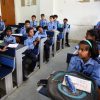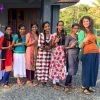
Profugo, like many other organizations, aims to create social change, and better the lives of those who have less access to resources such as health services, education, and entrepreneurial skills. The work Profugo does is essential and has fostered great change in Wayanad. What is fundamental to the work they do however, is that it is underscored with the prioritization of choice, participation, and inclusion of the community they are serving. A crucial aspect of
Read more ... →



